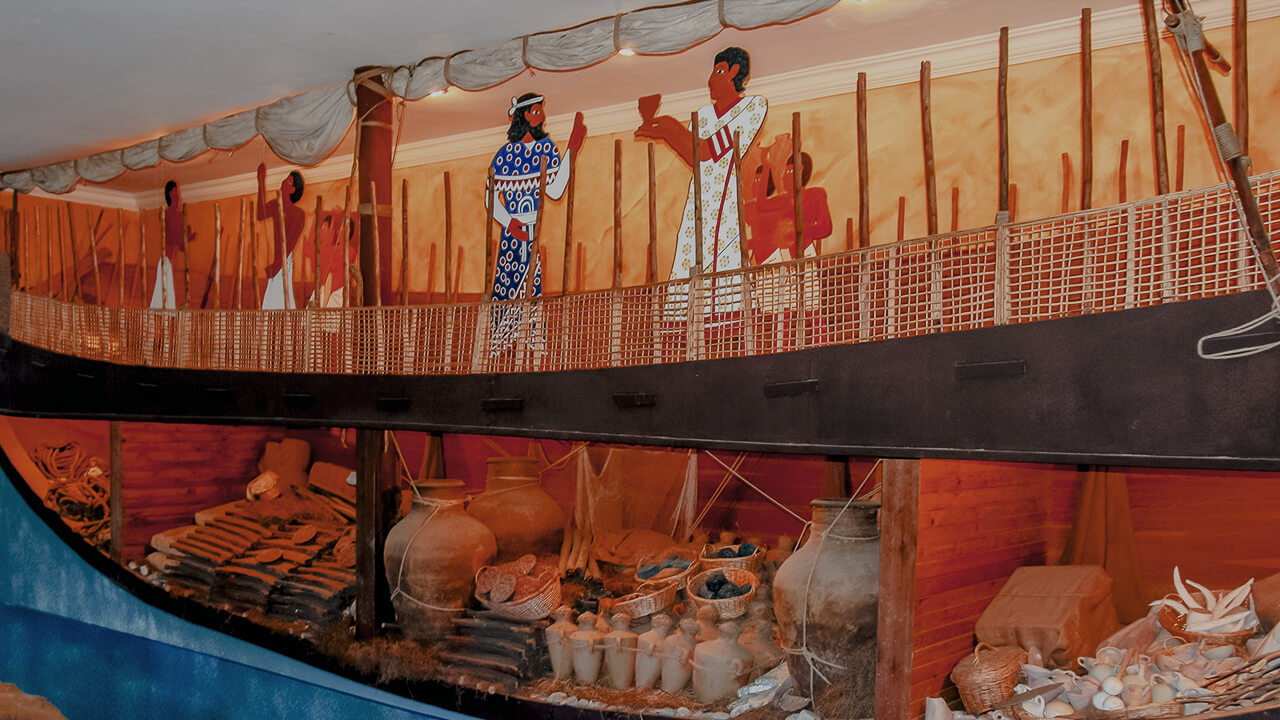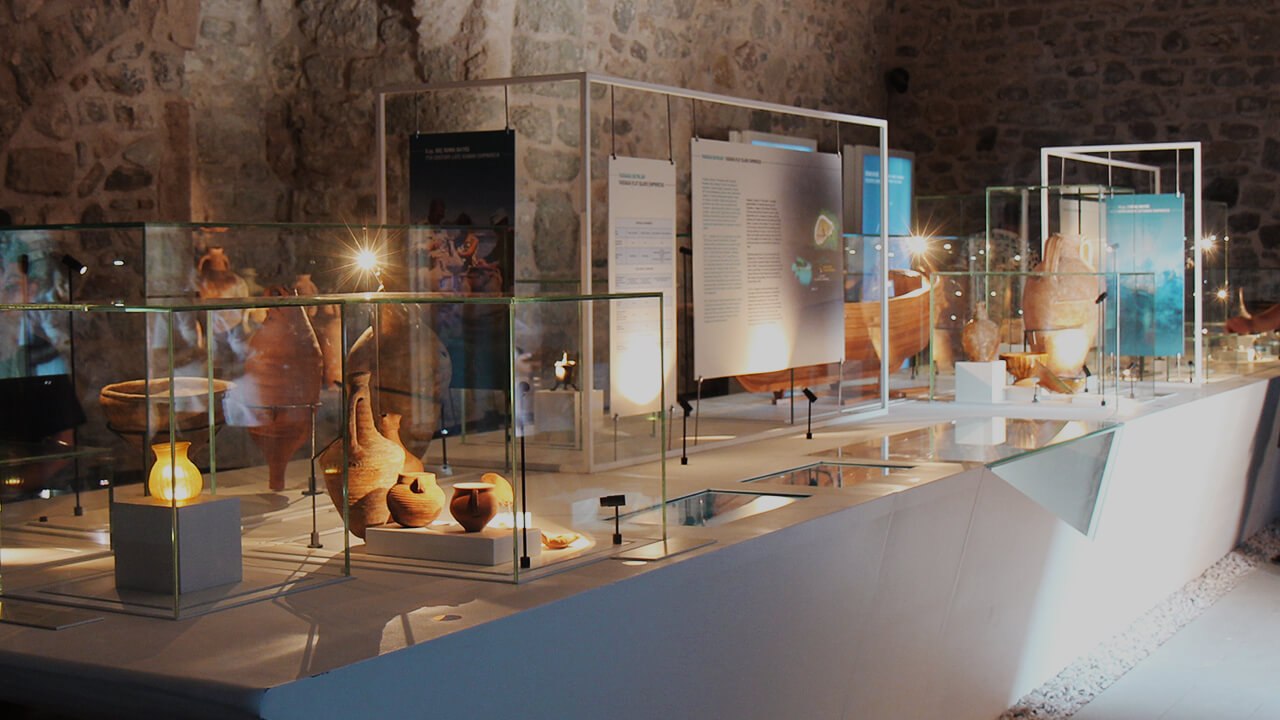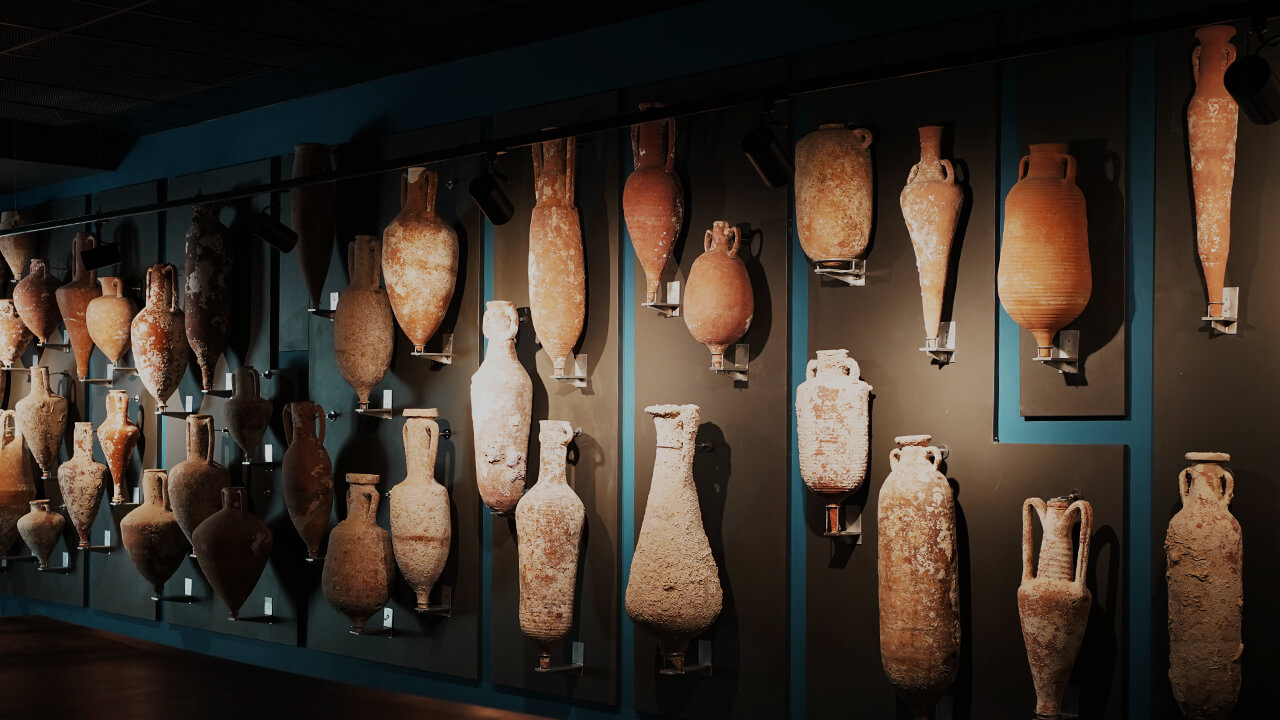
7.07.2023
5 Dakika
Bodrum is one of Türkiye's most popular tourist destinations with its beautiful beaches, archaeological sites and fascinating history. The history of Bodrum, which is one of the factors that make it so popular, is very interesting. Bodrum, which has been home to various civilizations for thousands of years, was very difficult to protect in ancient times. For this reason, the magnificent castle of the Knights of St. Jean was built, which we know today as Bodrum Castle.
The castle, which provided security for Bodrum with its magnificent structure and the inner castle accessible through seven gates, changed its function at the end of the 19th century and was converted into a prison due to its robust structure. Today, the castle welcomes visitors as the Bodrum Underwater Archaeology Museum and was added to the UNESCO World Heritage Tentative List in 2016. We have gathered the artifacts worth seeing in Bodrum Underwater Archaeology Museum, which combines the multi-layered historical structure of the castle with the underwater findings of the region!

Bodrum Underwater Archaeology Museum has a very extensive collection of shipwrecks. The shipwreck exhibited in the Serçe Harbor Glass Shipwreck Exhibition Hall belongs to a Byzantine ship dating back to the 11th century AD, which sank in a natural bay in the Serçe Harbor of Marmaris. The main cargo of the ship consists of tons of raw and waste glass. This glass is used for recycling, as well as thousands of glass vessels made from nearly a million pieces of broken glass. In addition to the ship and glass finds, hundreds of different artifacts are on display, including Islamic gold and Byzantine copper coins, Byzantine and Islamic scales and weights, lead seals, spears and vessels. With its valuable finds, the Serçe Harbor Shipwreck proves the trade route between the Middle East and Europe from the 11th century until today.

Another interesting and important shipwreck of the museum is Uluburun, which is also known all over the world. This ship, named "Uluburun" because of its location, dates back to the Bronze Age. The ship carried 10 tons of copper ingots and 1 ton of tin, which were the main cargo of the ship. The glass ingots found on board are the oldest known glass ingots in history. Also, 150 clay jars, bronze tools, ostrich eggs, seals and statuettes are among the remains recovered from the ship.
The presence of a seal of Egyptian Queen Nefertiti on the ship also led to evidence that it was an Egyptian Royal Ship. The shipwreck is considered one of the most important finds from the Late Bronze Age in the Mediterranean.

The Bozukkale Shipwreck Hall of the museum exhibits artifacts recovered from the shipwreck in Bozukkale district at a depth of between 30-47 meters. The Bozukkale Shipwreck, which dates back to the Archaic period, differs from all other shipwrecks found in the Aegean and the Mediterranean by its cargo of more than 300 mortarium and the first and only known group of terracotta and limestone sculptures in the Mediterranean.
It is believed that the large and wide moratorium-type bowls, often used for crushing and grinding spices and grains, were also used for food offerings at sacred sites. It is claimed that the ship was carrying a special cargo and that they were votive statues that were brought to the temples as offerings.

In the hall where the artifacts recovered from the Yassıada shipwrecks are displayed, artifacts from the late Roman shipwreck from the 5th century AD, the Byzantine shipwreck from the 7th century AD and the Ottoman shipwreck from the 16th and 17th centuries AD can be seen. Three ships, separated for centuries, shared the same fate: they were lying on top of each other when they broke the ground and sank on the rocks of Yassıada: Roman, Byzantine and Ottoman wrecks. A 1:1 scale replica of part of the Byzantine shipwreck is exhibited in the hall along with the finds. The head of the replica is shown in the exhibition in all its underwater glory.

The vast majority of artifacts recovered from shipwrecks are amphorae. So what is an amphora? In very general terms, an amphora is a cube with two vertical handles that was used in ancient times to store and transport foodstuffs such as wine and olive oil. The amphora gets its name from this shape. The word is a combination of the words “double-sided” and “carry”.
Amphorae from different eras, regions and cultures have different characteristics. For those who want to study these amphorae and see their differences, the Bodrum Underwater Archaeology Museum with its rich collection offers a unique experience. In the amphora exhibition, one can see amphorae from different eras and regions from the 16th century BC to the 12th century AD.
Bodrum Underwater Archaeology Museum offers the perfect experience for those interested in history, archaeology or marine life. The museum offers visitors an unforgettable insight into the region's past and the world beneath the waves. If you are curious about how the artifacts worth seeing were recovered from the wrecks and how they got to the museum, you can watch our video "Uncovering the Underwater Archeology: Write a Story" on the YouTube channel of the Turkish Museums.